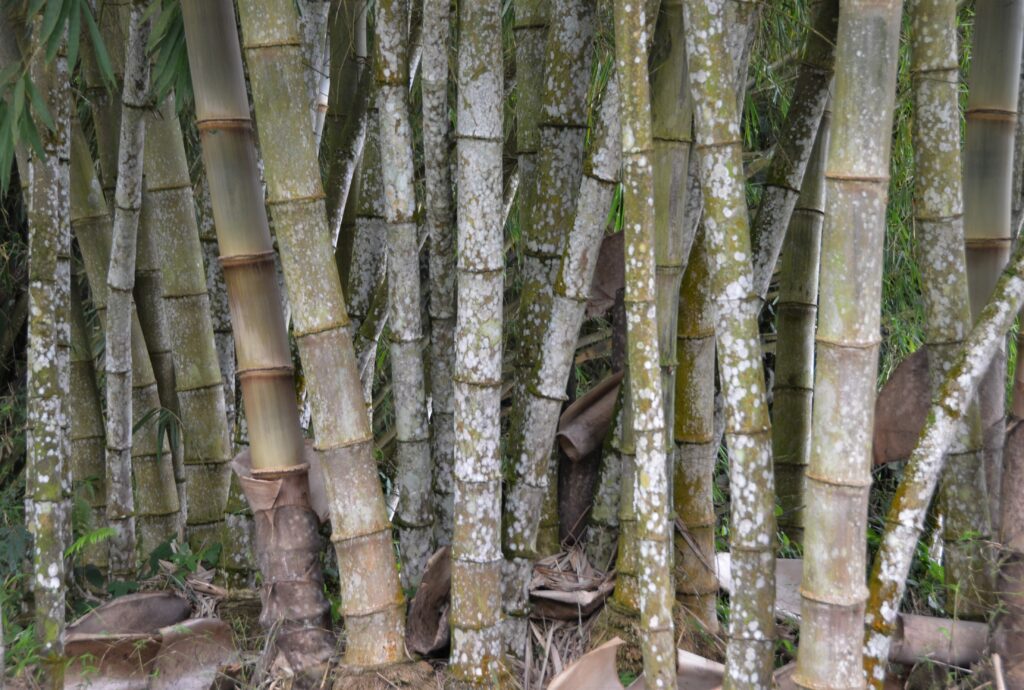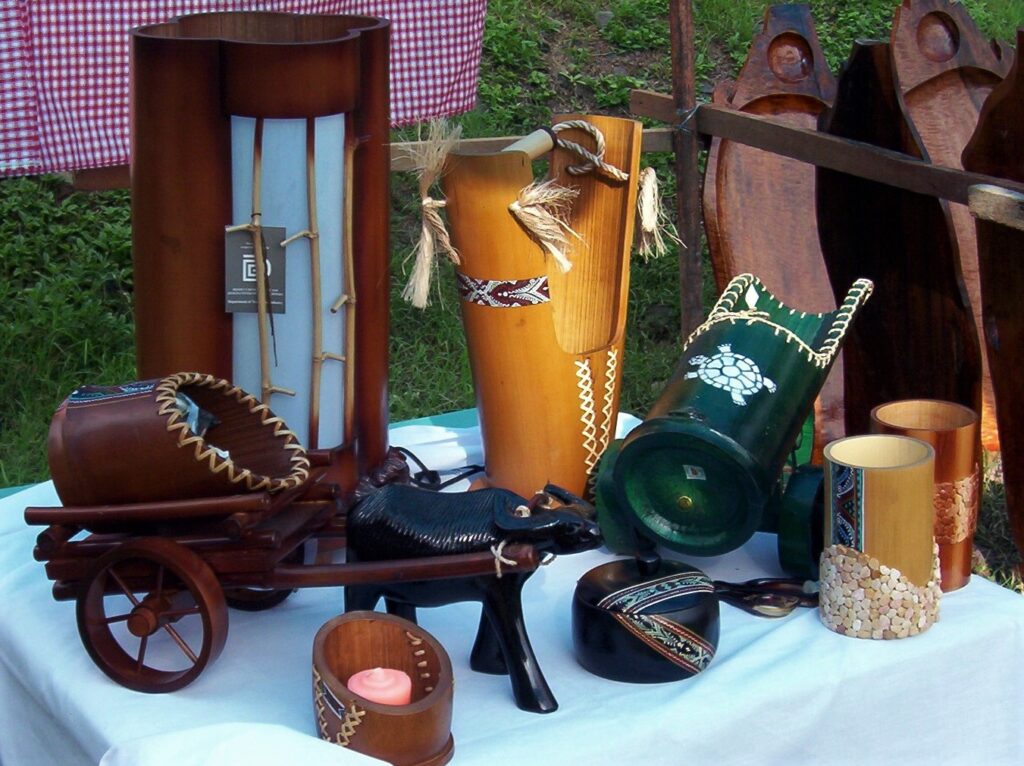Text and Photos by Henrylito D. Tacio
By launching the Center Innovation and Technology for Enterprise (CITE) as a training center for capacity building and consultative programs of the Philippine Bamboo Industry Development Council, the government is serious in boosting investment interest for bamboo.
To be launched in February 2023, the CITE facility of the Department of Trade and Industry (DTI) will be the home base for the sector. It is the opportune time as bamboo is just starting to gain interest among private and public investors in light of the post-pandemic scenario and efforts to fight climate change, flooding, and natural disasters.
Deogracias Victor B. Savellano, the vice-chairman of PBDIC, said bamboo is now recognized as a new “tree of life” (originally bestowed to coconut) that gives livelihood to the poorest in the countryside. That includes even the ancestral domains occupied by indigenous people groups which dominate 30-to 40% of the country’s potential productive lands.
Secretary Alfredo Pascual of the Department of Trade and Industry (DTI), who has reconvened the PBIDC, has thrown his support for the bamboo programs. “Even non-government organizations have laid out their plans for the industry. The private sector is very serious about planting bamboo,” said Savellano.
The CITE facility, based in Marikina City, houses training machines, equipment, function rooms, a dormitory for in-house training, and offices. The CITE also has a Bambusetum in the city that showcases different bamboo varieties and their uses. It has been offering training on bamboo propagule production and bamboo product processing.
“Nobody used to pay attention to bamboo before. With PBIDC now reconvened, bamboo programs will have continuity,” said PBIDC Executive Director Butch Madarang.
The success of these initiatives, particularly bamboo planting, is dependent upon the involvement of local governments units. As such, the PBIDC executive committee is enjoining the Department of Interior and Local Government (DILG) and League of Cities to be part of PBIDC. Also to be tapped as part of the council are Technical Education and Skills Development Authority (TESDA) and the Climate Change Commission (CCC).
“There is a big demand for bamboo. There’s an urgency in what we’re doing. We want to develop the bamboo industry under President Marcos’s term, and we now only have 5.5 years,” Savellano said. “(That’s why) we have to make our programs inclusive. It should involve everybody who wants to support the industry.”
“If we can’t do it now, when else can it be done?” he asked, adding that Marcos already made a declaration during the United Nations General Assembly that fighting climate change will be a priority of his administration.
Marcos also made a call on his birthday on Sept 13, last year, during the Nationwide Bamboo and Tree Planting Program, urging everyone “for us to uphold environmental protection.”
Other members of PBIDC are the heads of the Department of Agriculture (DA), Department of Education (DepEd), Department of Environment and Natural Resources (DENR), Department of Science and Technology (DOST), and Department of Labor and Employment (DOLE), among others.
The PBIDC bill under House Bill 9576 has been approved for third reading in the Lower House and transmitted to the Senate, which had two hearings. But the national election has halted the proceedings. Nevertheless, the bill will be refiled in the 19th Congress.


While the bill has not yet been approved, the PBIDC is putting up with tapping resources from different agencies that have a budget, albeit minimal, for different bamboo programs. DTI, for one, has programs for bamboo commercialization and processing, DOST has bamboo researches.
“Since the budget and programs for 2023 are yet to be planned, we are appealing to the different agencies to include bamboo in their programs. The DA, for example, has declared bamboo as a high value crop. Bamboo should be included in its High Value Crop program,” Savellano said.
Actually, bamboo is not a tree but a grass. It is a perennial grass belonging to the family “Gramineae.” It is considered near-relatives of rice, corn, wheat, oats, and barley. There are 75 genera and over 1,250 species in the tropical, sub-tropical, and mild temperate regions of the world.
Several bamboo species grow in the Philippines, but giant bamboo (known in the science world as Dendrocalamus asper) is the most preferred commercially. Other important species are kauayan-tinik, kauayan-kiling, bayog, botong, bolo, anos, and buho.
“What makes bamboo a versatile crop is its regenerative characteristic where several shoots grow to replace a harvested pole,” said Rod Bioco, president of the Bukidnon Giant Bamboo Resources Corporation in Malaybalay City.
The bamboo industry in the Philippines has the potential to grow “but it needs proper research and government support for it to prosper,” said the late Leonardo Avila III during the time when he was the officer-in-charge of the Davao City Agriculture Office. “The bamboo industry can be another good source of livelihood to our local farmers in the next few years.”
Jethro P. Adang, the director of the Davao-based Mindanao Baptist Rural Life Center (MBRLC) Foundation, Inc., agrees. “We have an abundance of bamboo but we don’t know what to do with it,” he says. “It is so common that we ignore its potential. Other countries have already seen not only the beauty but the potentials of bamboo.”
Renowned furniture designer Kenneth Cobonpue from Cebu has seen that, too. In fact, he designed “Phoenix,” the world’s first and only car made from bamboo and rattan, which was showcased at a furniture fair in Milan recently.
The car, which looked like a bird about to take flight, was created in just ten days with the use of bamboo, rattan, steel, and nylon. According to Inhabitat, an environmental web blog, “Phoenix” is designed to last the average length of time a person keeps a car – about five to 20 years.
There are so many potentials from bamboo. Furniture makers and wood craftsmen who shift from wood to bamboo are expected to share in the huge export bonanza expected from a growing demand for bamboo furniture and bamboo handicrafts in the global market.
Bamboo has a million uses. According to an article, which appeared in Reader’s Digest, bamboo “is delicate enough to be used in phonograph needles, yet strong enough to be used in bridge construction.” As such, bamboo can replace or indirectly decrease consumption of three critically scarce resources: wood, metal, and oil.
Already, bamboo is being used as scaffolding and concrete reinforcement in the construction of buildings. In Bangladesh, where 73% of the population lives in bamboo houses, bamboo provides pillars, walls, window frames, rafters, room separators, ceilings, and roofs. Throughout rural Asia, it is used for building bridges, from the sophisticated technology of suspension bridges to the simpler pontoon bridges.
In the Philippines, bamboo is also indispensable in the fishing and banana industry. Fishermen likewise use bamboo as material for making rafts, fishing rods, outriggers for bancas, and for fish pens. In salt-water areas, bamboo is used as stakes in the culture of mussels and oysters.


Bamboo is also used in the manufacture of musical instruments like horns, clarinets, saxophones, flutes, piccolos, xylophones, and drums. In Java, Indonesia, 20 different musical instruments have been fashioned out of bamboo. The world-famous bamboo organ at the Roman Catholic Church of Las Piñas is a historic example of the importance of bamboo.
There are also sophisticated uses of bamboo – charcoal for electric batteries, liquid diesel fuel obtained by distillation, and enzymes and media for shoot extracts used for culturing disease-causing bacteria. The white powder produced on the outer space of young culms for the isolation of a crystalline compound is medically useful.
The bamboo business is labor intensive, more so during the first two years of operation. Studies have shown that labor alone eats around 90 percent of the total production cost. But the beauty of bamboo growing lies in passing the first two critical growing years.
“If the bamboo survives, you are assured of money for the next 30 to 50 years,” says a bamboo grower. Another good thing: the price of bamboo does not suffer from severe fluctuations unlike pork and chicken. In fact, they are priced depending on the diameter, volume and distance traveled.
Bamboo grows anywhere in the country. It even grows on marginal farm areas, not much good for anything else. “It is a pity that we have neglected this important crop for so long,” Adang laments.
The PBIDC bill saw a $8 billion global market for bamboo. It will have a tremendous economic multiplier effect as it is seen to replace plastic, metal, and other wood as manufacturing input.
“If we can’t develop our bamboo industry, tell me what else we are capable of doing?” Savellano wondered.

